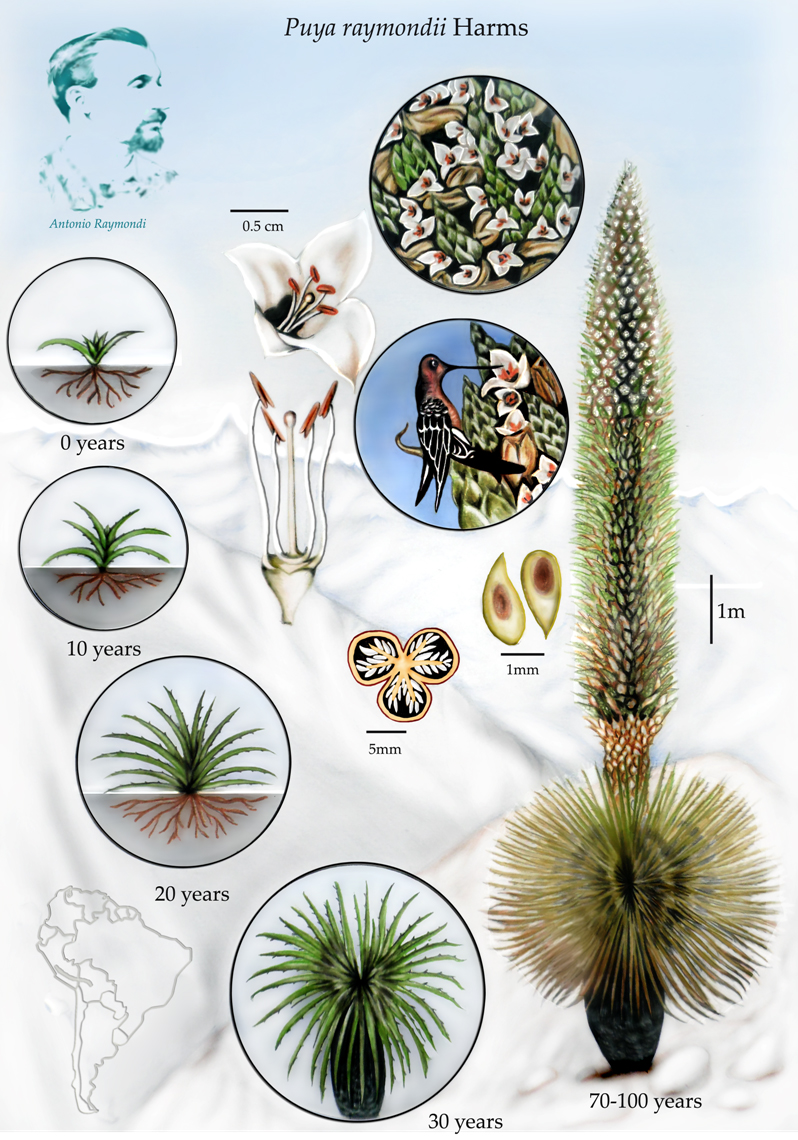|
Black-breasted Hillstar
The black-breasted hillstar (''Oreotrochilus melanogaster'') is a species of hummingbird in the "coquettes", tribe Lesbiini of subfamily Lesbiinae. It is endemic to Peru.HBW and BirdLife International (2020) ''Handbook of the Birds of the World and BirdLife International digital checklist of the birds of the world'' Version 5. Available at: http://datazone.birdlife.org/userfiles/file/Species/Taxonomy/HBW-BirdLife_Checklist_v5_Dec20.zip xls zipped 1 MBretrieved 27 May 2021 Taxonomy and systematics The black-breasted hillstar is monotypic. Description The black-breasted hillstar is long and weighs about . Adults have a medium length slightly decurved black bill. The male's upperparts are bronzy brown. It has a shining emerald green gorget, grayish brown flanks, and entirely black breast, belly, and vent area. The tail is slightly forked and blue-black. The female is dull bronzy brown above and below. Its throat is pale with fine dark speckles. The tail is greenish black and ... [...More Info...] [...Related Items...] OR: [Wikipedia] [Google] [Baidu] |
John Gould
John Gould (; 14 September 1804 – 3 February 1881) was an English ornithologist. He published a number of monographs on birds, illustrated by plates produced by his wife, Elizabeth Gould, and several other artists, including Edward Lear, Henry Constantine Richter, Joseph Wolf and William Matthew Hart. He has been considered the father of bird study in Australia and the Gould League in Australia is named after him. His identification of the birds now nicknamed "Darwin's finches" played a role in the inception of Darwin's theory of evolution by natural selection. Gould's work is referenced in Charles Darwin's book, ''On the Origin of Species''. Early life Gould was born in Lyme Regis, the first son of a gardener. Both father and son probably had little education. After working on Dowager Lady Poulett's glass house, his father obtained a position on an estate near Guildford, Surrey, and then in 1818, Gould Snr became foreman in the Royal Gardens of Windsor. Gould then be ... [...More Info...] [...Related Items...] OR: [Wikipedia] [Google] [Baidu] |
Department Of Pasco
Pasco () is a department and region in central Peru. Its capital is Cerro de Pasco. Political division The region is divided into 3 provinces ( es, provincias, singular: ), which are composed of 28 districts (''distritos'', singular: ''distrito''). Provinces The provinces, with their capitals in parentheses, are: * Daniel Alcídes Carrión (Yanahuanca) * Oxapampa (Oxapampa) * Pasco (Cerro de Pasco) Places of interest * Cerro de la Sal * El Sira Communal Reserve * Gran Pajonal * San Matías–San Carlos Protection Forest * Yanachaga–Chemillén National Park * Yanesha Communal Reserve The Communal Reservation Yanesha or Yanesha Community Reserve is a communal reserve in the Palcazu District of Oxapampa Province of Peru. It covers an area of in the Palcazu River basin. The reserve was creating by law on April 28, 1988, to prot ... External links Gobierno Regional Pasco – Pasco Regional Government official website Regions of Peru {{Pasco-geo-stub ... [...More Info...] [...Related Items...] OR: [Wikipedia] [Google] [Baidu] |
Endemic Birds Of Peru
Endemism is the state of a species being found in a single defined geographic location, such as an island, state, nation, country or other defined zone; organisms that are indigenous to a place are not endemic to it if they are also found elsewhere. For example, the Cape sugarbird is found exclusively in southwestern South Africa and is therefore said to be ''endemic'' to that particular part of the world. An endemic species can be also be referred to as an ''endemism'' or in scientific literature as an ''endemite''. For example '' Cytisus aeolicus'' is an endemite of the Italian flora. '' Adzharia renschi'' was once believed to be an endemite of the Caucasus, but it was later discovered to be a non-indigenous species from South America belonging to a different genus. The extreme opposite of an endemic species is one with a cosmopolitan distribution, having a global or widespread range. A rare alternative term for a species that is endemic is "precinctive", which applies to s ... [...More Info...] [...Related Items...] OR: [Wikipedia] [Google] [Baidu] |
Birds Of The Peruvian Andes
Birds are a group of warm-blooded vertebrates constituting the class Aves (), characterised by feathers, toothless beaked jaws, the laying of hard-shelled eggs, a high metabolic rate, a four-chambered heart, and a strong yet lightweight skeleton. Birds live worldwide and range in size from the bee hummingbird to the ostrich. There are about ten thousand living species, more than half of which are passerine, or "perching" birds. Birds have whose development varies according to species; the only known groups without wings are the extinct moa and elephant birds. Wings, which are modified forelimbs, gave birds the ability to fly, although further evolution has led to the loss of flight in some birds, including ratites, penguins, and diverse endemic island species. The digestive and respiratory systems of birds are also uniquely adapted for flight. Some bird species of aquatic environments, particularly seabirds and some waterbirds, have further evolved for swimming. Bird ... [...More Info...] [...Related Items...] OR: [Wikipedia] [Google] [Baidu] |
IUCN
The International Union for Conservation of Nature (IUCN; officially International Union for Conservation of Nature and Natural Resources) is an international organization working in the field of nature conservation and sustainable use of natural resources. It is involved in data gathering and analysis, research, field projects, advocacy, and education. IUCN's mission is to "influence, encourage and assist societies throughout the world to conserve nature and to ensure that any use of natural resources is equitable and ecologically sustainable". Over the past decades, IUCN has widened its focus beyond conservation ecology and now incorporates issues related to sustainable development in its projects. IUCN does not itself aim to mobilize the public in support of nature conservation. It tries to influence the actions of governments, business and other stakeholders by providing information and advice and through building partnerships. The organization is best known to the wider ... [...More Info...] [...Related Items...] OR: [Wikipedia] [Google] [Baidu] |
Phenology
Phenology is the study of periodic events in biological life cycles and how these are influenced by seasonality, seasonal and interannual variations in climate, as well as environmental factor, habitat factors (such as elevation). Examples include the date of emergence of leaves and flowers, the first flight of butterflies, the first appearance of bird migration, migratory birds, the date of leaf colouring and fall in deciduous trees, the dates of egg-laying of birds and amphibia, or the timing of the developmental cycles of temperate-zone honey bee colonies. In the scientific literature on ecology, the term is used more generally to indicate the time frame for any seasonal biological phenomena, including the dates of last appearance (e.g., the seasonal phenology of a species may be from April through September). Because many such phenomena are very sensitive to small variations in climate, especially to temperature, phenological records can be a useful proxy (climate), proxy for ... [...More Info...] [...Related Items...] OR: [Wikipedia] [Google] [Baidu] |
Eucalyptus
''Eucalyptus'' () is a genus of over seven hundred species of flowering trees, shrubs or mallees in the myrtle family, Myrtaceae. Along with several other genera in the tribe Eucalypteae, including '' Corymbia'', they are commonly known as eucalypts. Plants in the genus ''Eucalyptus'' have bark that is either smooth, fibrous, hard or stringy, leaves with oil glands, and sepals and petals that are fused to form a "cap" or operculum over the stamens. The fruit is a woody capsule commonly referred to as a "gumnut". Most species of ''Eucalyptus'' are native to Australia, and every state and territory has representative species. About three-quarters of Australian forests are eucalypt forests. Wildfire is a feature of the Australian landscape and many eucalypt species are adapted to fire, and resprout after fire or have seeds which survive fire. A few species are native to islands north of Australia and a smaller number are only found outside the continent. Eucalypts have been grow ... [...More Info...] [...Related Items...] OR: [Wikipedia] [Google] [Baidu] |
Trap-lining
In ethology and behavioral ecology, trap-lining or traplining is a feeding strategy in which an individual visits food sources on a regular, repeatable sequence, much as trappers check their lines of traps. Traplining is usually seen in species foraging for floral resources. This involves a specified route in which the individual traverses in the same order repeatedly to check specific plants for flowers that hold nectar, even over long distances. Trap-lining has been described in several taxa, including bees, butterflies, tamarins, bats, rats, and hummingbirds and tropical fruit-eating mammals such as opossums, capuchins and kinkajous. Traplining is used to term the method in which bumblebees and hummingbirds go about collecting nectar, and consequently, pollinating each plant they visit. The term "traplining" was originally coined by Daniel Janzen, although the concept was discussed by Charles Darwin and Nikolaas Tinbergen. Behavioral response In the instance of hummingbirds ... [...More Info...] [...Related Items...] OR: [Wikipedia] [Google] [Baidu] |
Puya Raimondii
''Puya raimondii'', also known as queen of the Andes (English), titanka (Quechua) or puya de Raimondi (Spanish), is the largest species of bromeliad, its inflorescences reaching up to in height. It is native to the high Andes of Bolivia and Peru. It was once hypothesized to be a ''Protocarnivorous plant''. Taxonomy The first scientific description of this species was made in 1830 by the French scientist Alcide d'Orbigny after he encountered it in the region of Vacas, Cochabamba, in Bolivia at an altitude of . However, as the plants he saw were immature and not yet flowering, he could not classify them taxonomically. The species name of ''raimondii'' commemorates the 19th-century Italian scientist Antonio Raimondi, who immigrated to Peru and made extensive botanical expeditions there. He encountered this species in the region of Chavín de Huantar and published it as new to science under the name ''Pourretia gigantea'' in his 1874 book ''El Perú'' In 1928, the name was cha ... [...More Info...] [...Related Items...] OR: [Wikipedia] [Google] [Baidu] |
Chuquiraga Spinosa
''Chuquiraga spinosa'', common name in Spanish, is a species of flowering plant of the family Asteraceae. Native to Perú and Bolivia, it is used in traditional medicine for its anti-inflammatory properties. Taxonomy ''Chuquiraga spinosa'' was described by Christian Friedrich Lessing and published in Linnaea 5: 259, in 1830. Economic and cultural importance It is used in traditional medicine in Peru as a cleanser, a diuretic, and to treat kidney, liver, and prostate inflammation. Secondary metabolites The presence of phenolic acids, flavonoids, saponins, alkaloids, tannins, and steroids has been identified in the ethanolic extract of the aerial parts of the plant. Scientific studies ''In vitro'' studies in 2005 in Lima have determined the antioxidant properties of 53 ethanolic extracts of 40 plants used in traditional Peruvian medicine from different parts of the plants (root, flowers, stems, leaves, bark). The antioxidant activity of 21 of the extracts was demonstrated, i ... [...More Info...] [...Related Items...] OR: [Wikipedia] [Google] [Baidu] |
Puna Grassland
The puna grassland ecoregion, of the montane grasslands and shrublands biome, is found in the central Andes Mountains of South America. It is considered one of the eight Natural Regions in Peru,Pulgar Vidal, Javier: Geografía del Perú; Las Ocho Regiones Naturales del Perú. Edit. Universo S.A., Lima 1979. First Edition (his dissertation of 1940): Las ocho regiones naturales del Perú, Boletín del Museo de historia natural „Javier Prado“, n° especial, Lima, 1941, 17, pp. 145-161. but extends south, across Chile, Bolivia, and western northwest Argentina. The term puna encompasses diverse ecosystems of the high Central Andes above 3200–3400 m. Location The puna is found above the treeline at 3200–3500 m elevation, and below the permanent snow line above 4500–5000 m elevation. It extends from central Peru in the north, across the Altiplano plateau of Peru, Chile and Bolivia, and south along the spine of the Andes into northwest Argentina. Other sourc ... [...More Info...] [...Related Items...] OR: [Wikipedia] [Google] [Baidu] |
_by_John_Gould.jpg)

.jpg)
.jpg)




